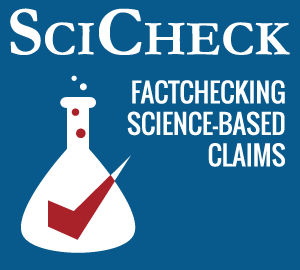In announcing his new “Precision Medicine Initiative” on Jan. 30, President Obama repeated an outdated and questionable number for the Human Genome Project’s return on investment, and oversold just how cheap sequencing a single person’s full genetic code has become.
The Human Genome Project was an international effort to map out the roughly 3 billion DNA bases present in every human cell. The project was declared complete in 2003. In his address to reporters, Obama repeated an impressive statistic he also mentioned in April 2013 about the genome project’s benefits.
Obama, Jan. 30: [O]ne study found that every dollar we spent to map the human genome has already returned $140 to our economy.
There was in fact such a study, released in 2011, but it was updated in 2013 to say the return on investment is $66 for every $1 spent.
In 2011, Battelle Memorial Institute released a report on the economic impact of the Human Genome Project. In that report, the authors noted that “every $1 of federal HGP [Human Genome Project] investment has contributed to the generation of $141 in the economy.”
 The benefits of the HGP are certainly enormous, providing the basis for continuing breakthroughs in medicine and basic science, along with advances in environmental science, agriculture and other disciplines. The Battelle study estimated the total dollar benefit from these advances at $796 billion from 1988 through 2010, with only a $3.8 billion ($5.6 billion in 2010 dollars) investment by the federal government, that yielded the $141 per-dollar-spent figure.
The benefits of the HGP are certainly enormous, providing the basis for continuing breakthroughs in medicine and basic science, along with advances in environmental science, agriculture and other disciplines. The Battelle study estimated the total dollar benefit from these advances at $796 billion from 1988 through 2010, with only a $3.8 billion ($5.6 billion in 2010 dollars) investment by the federal government, that yielded the $141 per-dollar-spent figure.
Repeating that finding, however, is misleading on a few counts. At the time, there was debate on whether the methodology used in arriving at the $141 figure was reasonable. In the journal Nature, economists questioned whether the analysis really reflected the true costs and benefits; for example, the salaries of those working on the Human Genome Project were counted as benefits, rather than costs. Other countries’ contributions were also not included in the analysis. Perhaps more important, though, the $3.8 billion in federal expenditures only accounted for the initial costs of the HGP, through 2003, while the benefits were counted all the way through 2010.
The Battelle Memorial Institute addressed this criticism of its analysis by updating its report in June 2013. The economic benefits with two more years ballooned to $965 billion, and the total expenditures, both initial funding and further funding after the HGP’s completion, were tagged at $14.5 billion. The return on investment, then, was about $66 for every dollar spent. Though he is correct that a study did find the $140 ROI, Obama’s repetition of the original number overstates just how impressive the HGP’s economic effects have been.
Cost of a Single Genome
One benefit that has arisen from the HGP is that it is now much easier, and cheaper, to map our DNA. Technology now exists to quickly sequence anyone’s genome for only a few thousand dollars, down from about $100 million, the cost when the HGP first mapped one full genome.
This is key to the new “Precision Medicine Initiative.” Among the initiative’s goals is the creation of a million-person volunteer study cohort that will involve “profiles of the patients’ genes.” This doesn’t necessarily mean full sequences for each patient — it is cheaper and quicker to sequence only certain parts of the genome known to be important, though full sequences for some will obviously provide more information. Another goal is to expand “genetically based clinical cancer trials.” This as well will require cheap and effective ways to sequence patients’ DNA.
The president, however, exaggerated how cheap sequencing is now compared with what it cost when Dr. Francis S. Collins, director of the NIH and a leader of the HGP, worked on sequencing the first human genome.
Obama: The year Dr. Collins helped sequence the first human genome, it cost about $100 million, and today it costs less than $2,000.
Actually, by the government’s own accounting, the average cost is $4,905.
The president is correct that the cost of sequencing one full genome has come down dramatically. As the White House and the NIH pointed out to us in emails, certain companies now say they are able to sequence whole genomes for $1,000 each. But the average cost has not yet reached that $2,000 plateau. The National Human Genome Research Institute, part of the National Institutes of Health, has tracked the cost of sequencing since the early 2000s. As of the latest update in July 2014, the average cost, which includes expenses such as maintenance and labor, had fallen to $4,905 for one individual’s full genetic code.
The $4,905 average is clearly a significant improvement over $100 million, but it is almost 150 percent greater than the “less than $2000” cited by the president.
Editor’s Note: SciCheck is made possible by a grant from the Stanton Foundation.
— Dave Levitan